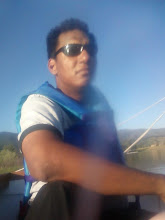 |
| Big Sky Forest Products |
As things happen here on the railroad change has come again. As this is an ever evolving project the desires and needs of the builder change and grow. But I had to drill down on what I was really wanting and what would work for my own mindset as the layout is concerned and this lead to some updates that will act as Matthew Freix would say "guiderails" keeping things on track. Terrible railroad puns intentional or not are free on this blog.
The railroad is set in the summer of 2024. Before construction it was the late 1950's and when construction had just begun that slipped to varying time periods but it's settled on 2024. This means that BNSF has taken over the MRL and by extension the Big Blackfoot Branch from Bonner Jct to Clearwater Jct. The Glacier Rail Park has been full and in operation for a few years as well meaning business to the north of the CSLP have had time to mature and gain customers and traffic. One thing I've heard and read repeatedly is when in doubt look to the prototype. So in this case it's the real life Mission Mountain Railroad when it operated the Kalispell branch and the Bitterroot Branch when it was under MRL ownership. What an eye opener a dozen photographs gave me. I could model this withing in the constraints of my layout size and operation. We'll get into the operations in the next installment of this blog but now I have something to work on.
New power and rolling stock is coming to the railroad too. Currently my car fleet is almost exclusively pre-1960 40' cars. Although I tried to work them into the modern concept I've decided to simply bite the bullet and update the fleet. A few of the current fleet will be saved as we'll need rolling stock for photo work but post 1980 stock is coming. My goal however is keep the texture alive. This means a lot of leased cars and cars from smaller roads that existed in the late 20th century but were not as common as the megamergers consumed the variety and color that once existed on our railroads. I've purchased my first modern power in the form of a ex-leased GP9 PII that will take over the bulk of assignments for the time being. As we move forward the keyword for motive power is reliability in a tough environment and this locomotive should fit the bill.
 |
| 1601 Small Livery (Notional) |
Scenery on the layout also continues. We are learning and while sometimes it's one step forward and one step back it's amazing what you can accomplish by simply watching a YouTube video and winging it. I look forward in the future to pointing out where I started. My bar for most of what is happening scenery wise is serviceable and I think I've managed to meet it.
 |
| With a little AI help, Happy Holidays to all us from the Clearwater Pacific! |





























